
Tags
Share
As an account executive, I know the importance of equipping a sales team with the tools they need to succeed in a highly competitive market. One of the most powerful weapons in our arsenal are sales battle cards—concise, easy-to-use “cheat sheet” type guides that arm our reps with the information they need to win over prospects and close deals faster.
In this article, I’ll go over what sales battle cards are, why they're so effective, and how you can create them for your own sales team. Whether you're a seasoned sales pro or just starting out in the field, this guide is essential reading for anyone looking to gain a competitive advantage and take their sales performance to the next level.
Competitive intel at your fingertips
Get Ai-powered competitive insights during sales calls with Dialpad Sell.
What is battle card in sales?
A sales battle card is a cheat sheet that contains essential information about your company, products, services, competitors, and customers. It’s a quick reference guide that can help your sales team prepare for any sales situation and answer common questions from potential customers.
The purpose of battle cards for sales: How they help your sales team
These concise documents are designed to arm sales reps with vital information and strategies to navigate the complexities of the sales process effectively. Let's delve into the three key purposes of battle cards and how they can significantly bolster your sales team's performance.
To create more effective pitches
Battle cards provide sales reps with a comprehensive overview of the features, benefits, and differentiators of what they're selling. Armed with this knowledge, they can tailor their pitches to resonate with the specific needs and pain points of prospective customers.Moreover, battle cards often include key messaging points and success stories that highlight real-world examples of how the offering has solved problems for other clients. This arsenal of persuasive content equips sales professionals with the ammunition they need to capture the attention and interest of potential buyers, ultimately increasing the likelihood of closing deals.
To stay a step ahead of the competition
In today's cutthroat business environment, staying ahead of the competition is a constant challenge. Battle cards provide a strategic advantage by empowering sales teams with insights into the strengths and weaknesses of competing products or services. By thoroughly understanding the competitive landscape, sales reps can position their offering more effectively and address any objections or concerns that may arise during the sales process.Additionally, battle cards often include competitive positioning matrices or SWOT analyses that enable sales professionals to compare and contrast their offering with alternatives in the market. Armed with this knowledge, they can articulate the unique value proposition of their solution and illustrate why it is superior to the competition. This proactive approach not only instills confidence in potential customers but also demonstrates the sales team's expertise and credibility.
To better prepare sales reps for objections or unforeseen complications
No sales pitch is immune to objections or unforeseen complications. However, with proper preparation, sales reps can effectively navigate these challenges and maintain momentum towards closing the deal. Battle cards play a crucial role in this regard by equipping sales professionals with responses to common objections and strategies for overcoming hurdles that may arise during the sales process.Whether it's addressing concerns about pricing, integration challenges, or perceived risks, battle cards provide sales reps with the knowledge and confidence they need to navigate even the most challenging conversations with prospects. By anticipating potential objections and proactively addressing them, sales teams can maintain control of the narrative and guide prospects towards a positive purchasing decision.
Sales battle card examples and types
There are different types of sales battle cards that you can create, depending on your goals and needs. Here are some examples:
Competitor battle cards
You can’t expect your sales or service reps to know every detail of every competitor. So when a customer asks, “Why should I pick you over XYZ?” Competitor battle cards are there to help you out. You can fill these battle cards with pricing information, features comparisons, customer reviews, and any other ammunition to set your business apart.
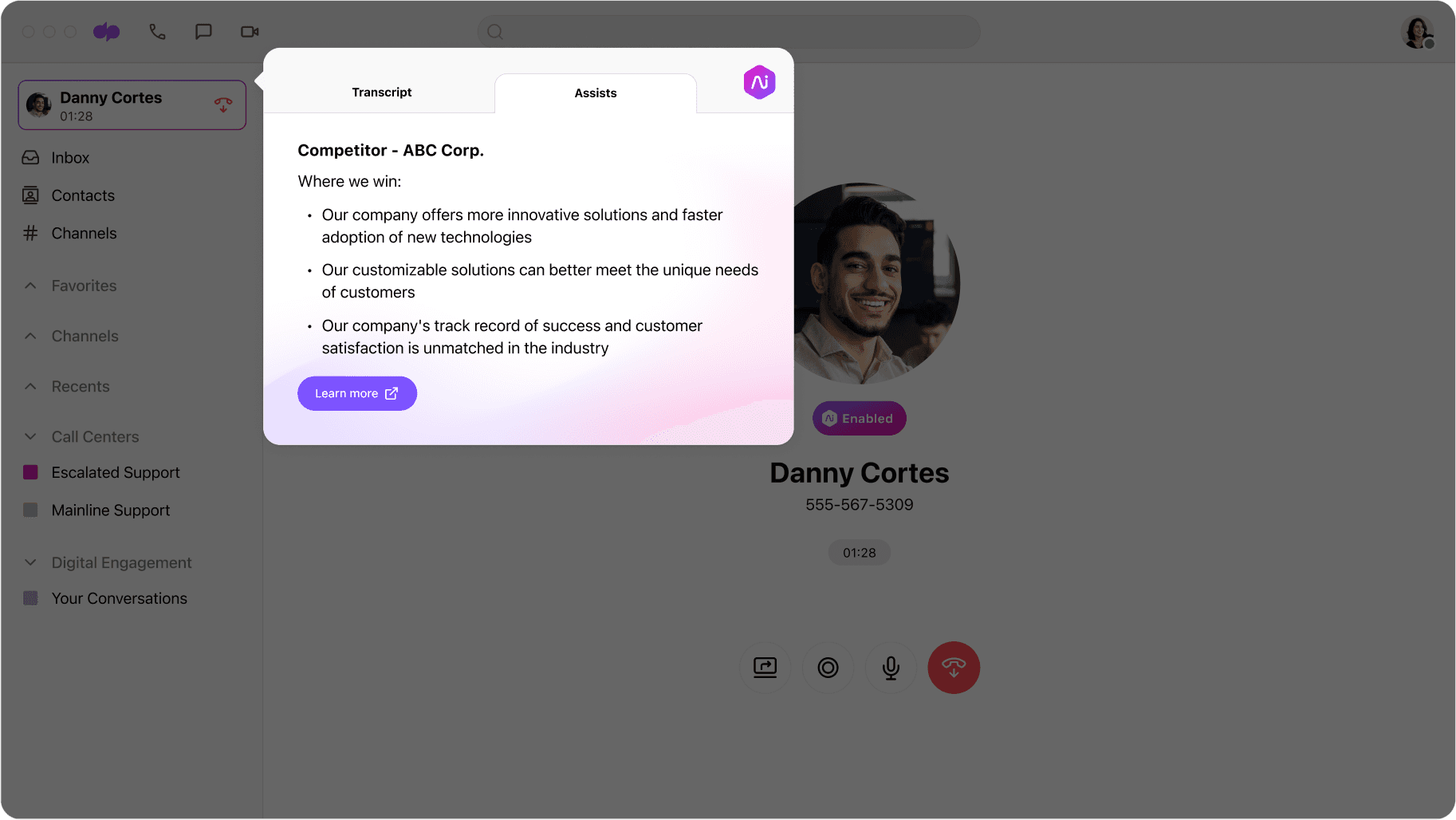
Cost/value battle cards
There are a few tactics you can engage when your prospect is concerned about cost. One way is to use sales battle cards to pull up your internal ROI calculator to prove that your product will save them money or provide them enough value to justify the price.
These battle cards could also contain information about the cost of not buying your product, as well as provide juicy talking points like statistics, case studies, quotes, anecdotes, customer reviews, analogies, testimonials, and more to sell its value.
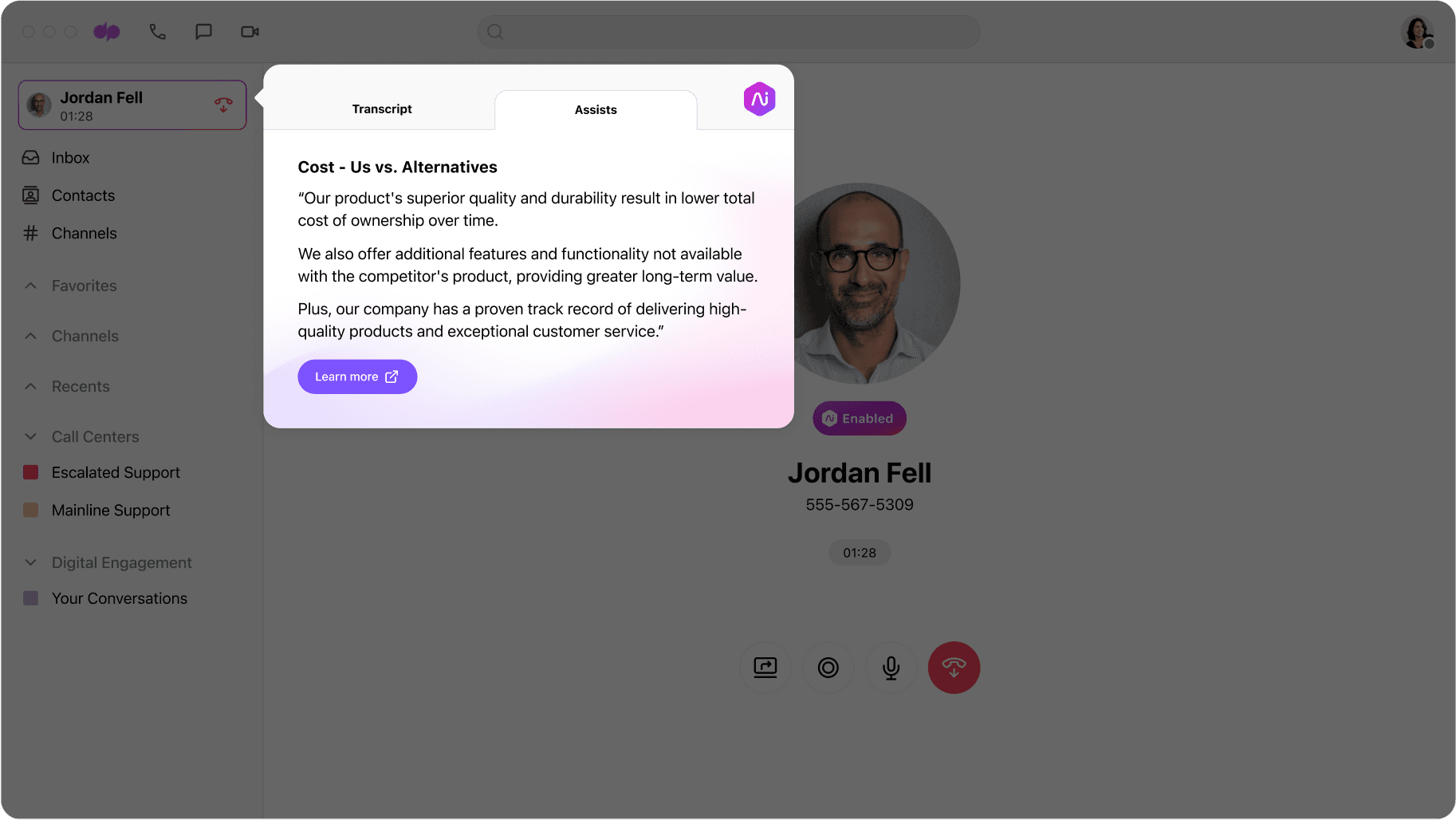
Service cancellation battle cards
There could be many reasons why a customer tries to cancel your service. With sales battle cards, you can prepare a defense for them all.
If a customer didn’t see enough value in your products, battle cards can quickly surface links to a series of blogs or helpful videos. If the customer finds a better offer, these cards can pull up approved incentives to save the deal without having to get a manager on the line.
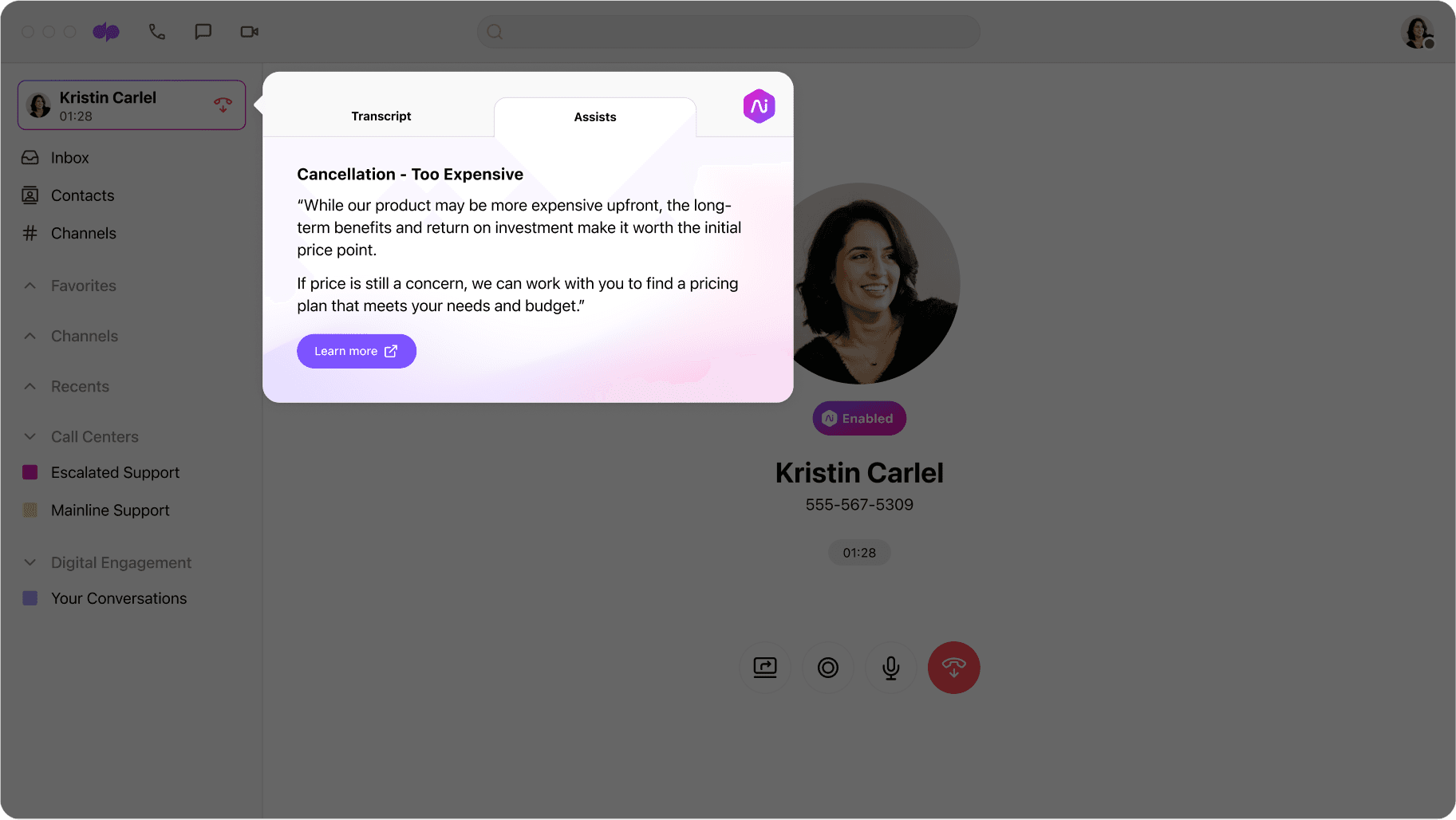
Use case battle cards
If a prospect asks for use cases for your product, or brings up features your product doesn’t currently offer, you can use sales battle cards to pull up a manager-approved script for your rep to read. Use this to steer the conversation away, prove that they don’t need the feature, or showcase a different feature that accomplishes the same goal.
Or, battle cards can link to your product roadmap to let reps know when that feature will be rolled out—all without having to put the prospect on hold or ask for help.
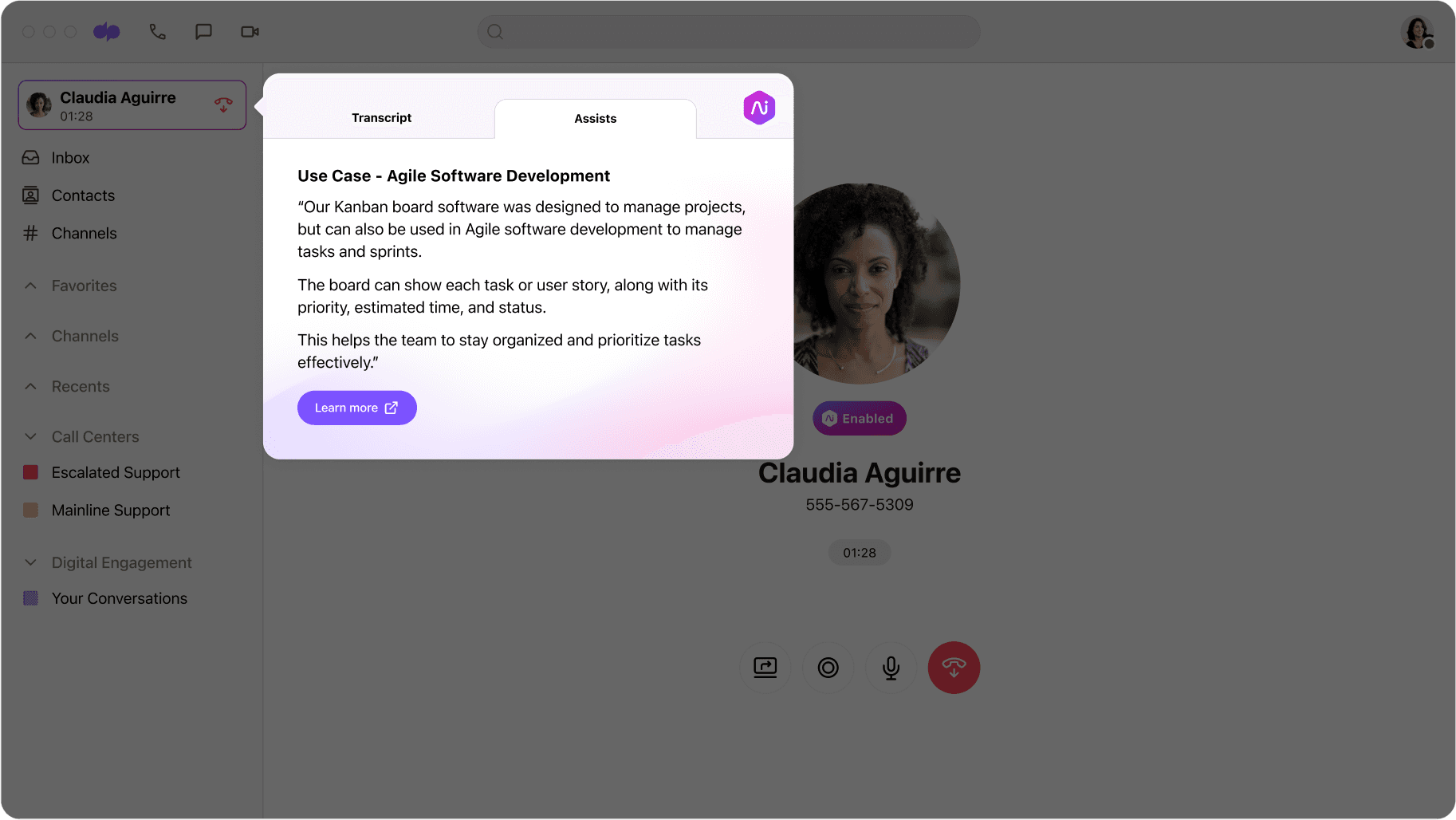
Sales rep training
Coaching new employees and continuing education for seasoned reps is always a struggle. There’s a lot to remember for new employees. With sales battle cards, they have access to manager-approved talk tracks—allowing them to hit the ground running. Battle cards are also an easy way to deliver new product information and test new strategies.

How to create your own sales battle card
Here are the steps to creating your own sales battle card:
Step 1: Assess the needs of your team
Identify the areas where your sales team needs help the most. Do they struggle with understanding your products, or do they need more information about your competitors?
Step 2: Choose categories for your battle cards
Decide which categories of information you want to include in your battle cards, such as competitor analysis, product information, or use cases.
Step 3: Identify pain points and set goals
Determine the pain points that your sales team and customers are experiencing, and set goals to address them.
Step 4: Research your competitors
Research your competitors to gather information about their products, services, and pricing.
Step 5: Customize your battle cards
Create a template for your battle cards and customize it with the information you gathered.
💡 Dialpad tip:
Your sales battle cards must be updated regularly to reflect changes in your products, services, or competitors.
Sales battle card template: What do your battle cards need to include?
When crafting battle cards for your sales team, it's essential to ensure they contain all the necessary information to empower your reps to succeed. Here's what your battle cards should include:
Vital information about your company and/or product offering
At the core of every battle card is a clear and concise overview of your company and its offerings. Include essential details such as the company's mission, vision, and core values. Describe the products or services you offer, highlighting key features, functionalities, and benefits. Providing this foundational information ensures that your sales reps have a solid understanding of what they're selling and can effectively communicate its value to prospects.
Profile of the target prospect
Understanding your target audience is crucial for tailoring your sales approach effectively. Include a profile of the ideal prospect for your product or service, including demographic information, pain points, challenges, and goals. This profile will help your sales reps identify qualified leads and personalize their pitches to resonate with the specific needs and interests of potential customers.
Key competitor insights and comparisons
In today's competitive marketplace, knowing your competitors inside and out is essential for differentiation and positioning. Include detailed insights into your main competitors, including their products or services, strengths, weaknesses, and pricing strategies. Additionally, provide side-by-side comparisons between your offering and competitors' offerings, highlighting key differences and advantages. Equipping your sales reps with this information enables them to effectively address objections and demonstrate the unique value proposition of your solution.
Unique selling points or use cases applicable to the target audience
What sets your product or service apart from the competition? Highlight your unique selling points (USPs) or use cases that demonstrate the value your offering brings to the target audience. Whether it's cost savings, increased efficiency, or improved performance, clearly articulate the benefits that resonate most with your prospects. Including real-world examples or success stories can further illustrate the tangible benefits of choosing your solution over alternatives.
Incorporating these elements into your battle card template ensures that your sales reps are equipped with the knowledge and resources they need to effectively engage prospects, differentiate your offering, and ultimately close more deals.
Sales battle cards vs. real-time agent assistance
Sales battle cards are a great tool for providing your sales team with essential information. But they aren't the only tool that you can use to improve your sales engagement. Real-time agent assistance, such as Dialpad’s Real-Time Assist, can provide your sales team with personalized coaching and guidance during their sales calls.
Dialpad’s Real-time Assist cards—or RTAs—pull up information on a card for your employees to reference live on the call based on the keywords or phrases that the customer or prospect says. Managers can customize these cards for a variety of uses specific to their business (including hyperlinking them to internal resources like existing knowledge bases or documentation):

If your sales org follows a particular methodology or sales playbook (like BANT, SPIN, and SPICED), Dialpad's Ai Playbooks feature can automatically suggest questions and phrases that you need to say during a call (for example, asking about budget or purchase timelines), understand whether the behavior was met, and check the task off the list (or notify managers if this isn't being done):
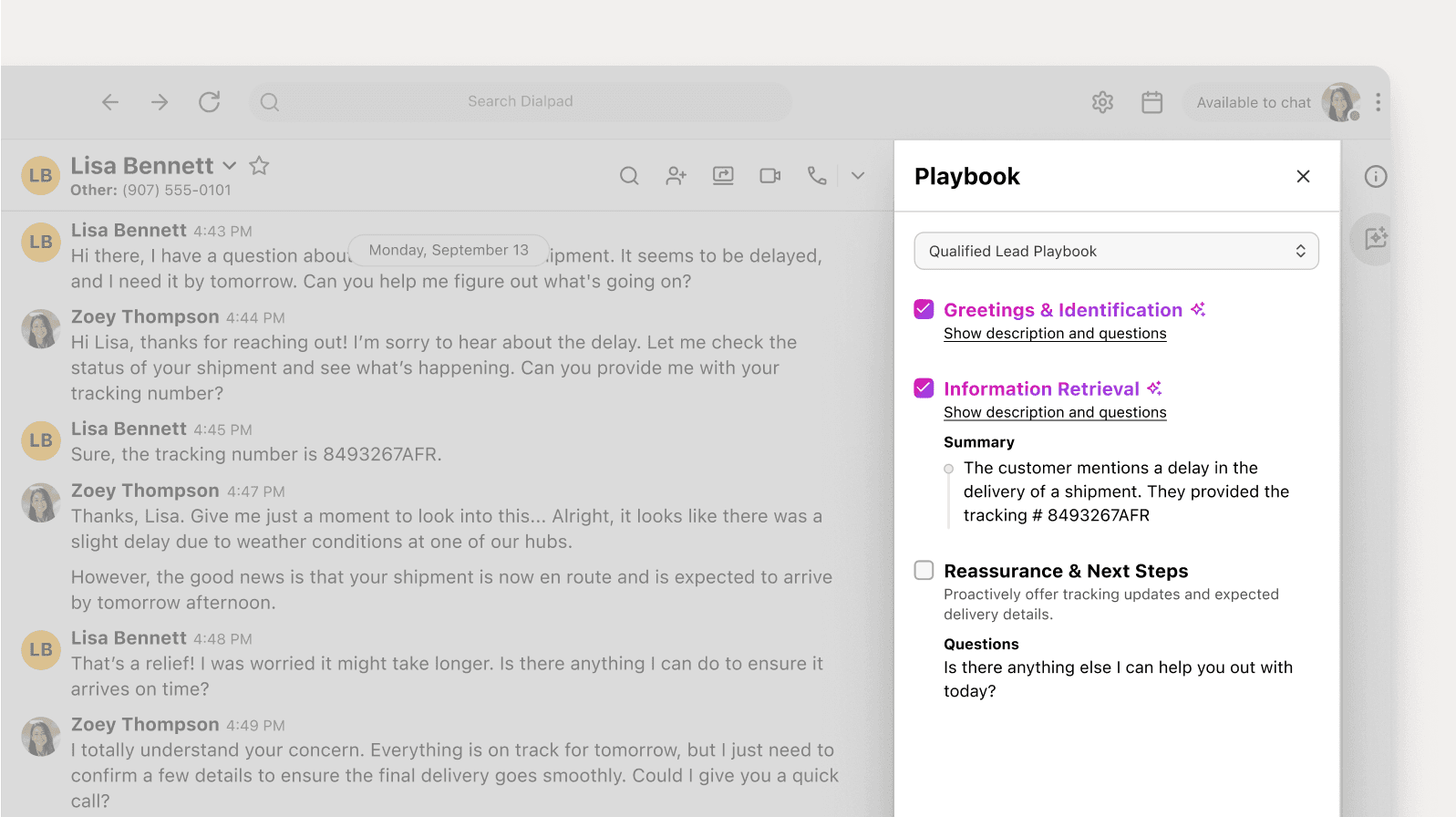
This is helpful for reps, because you can see right on your screen what questions you need to ask to successfully execute your playbook—before managers even come to you with that feedback. And it's useful for sales leaders too, because they don't have to painstakingly review every single call, and can quickly tell which reps need additional coaching or if any parts of the methodology can be improved upon—all thanks to this sales AI feature.
And Dialpad’s Ai Live Coach feature takes this a step further, with the ability to mine unstructured data, searching through everything from websites to past support calls, to find answers—even for questions that customers have never asked before:
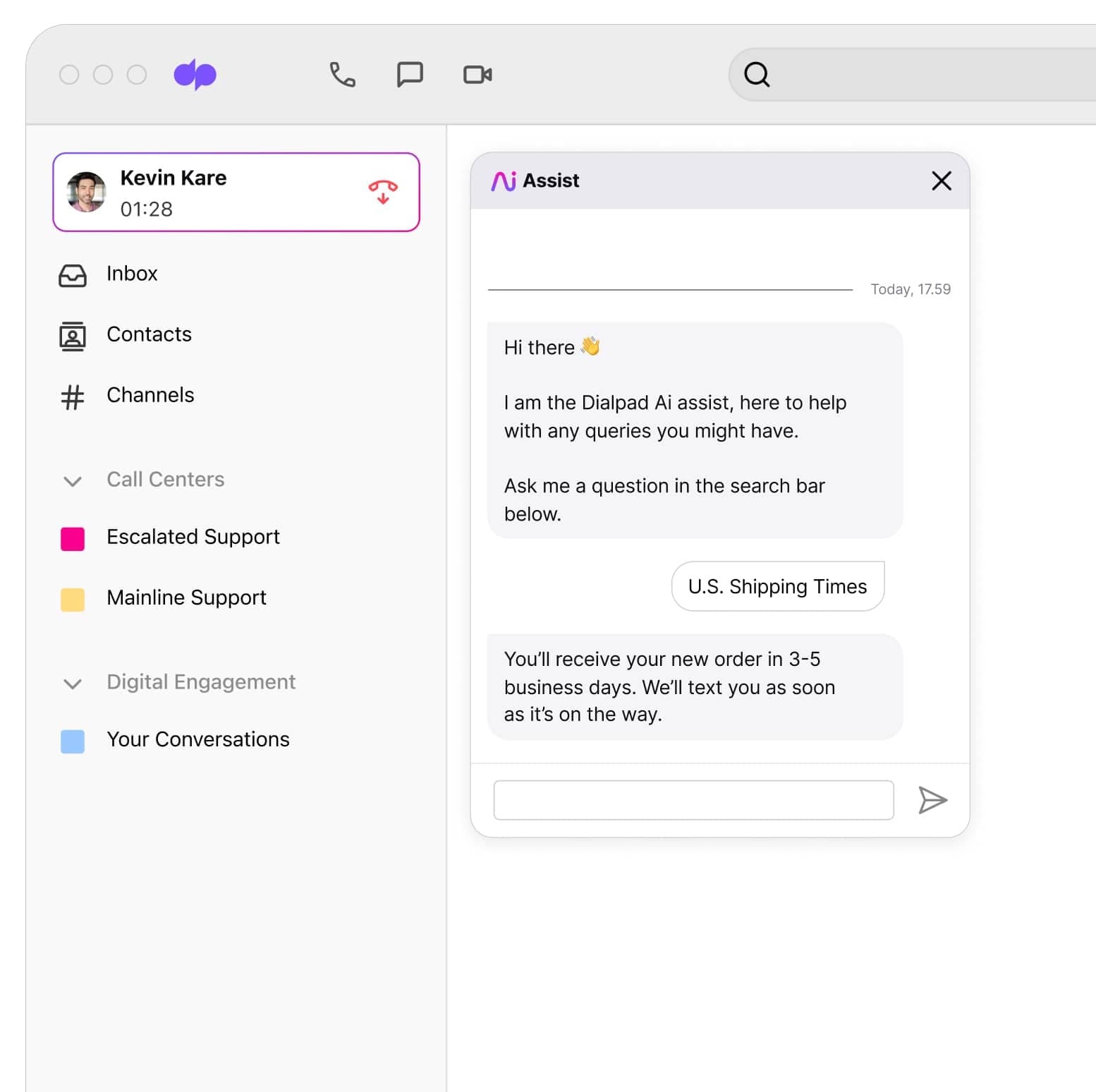
On top of that, Ai Live Coach:
Lets you create and organize conversational flows with the no-code drag-and-drop builder
Allows you to add automated processes within the agent assist pane
Allows for graphics, videos, and other rich media to provide better and clearer answers
Can point out gaps in your knowledge database that should be shored up to give agents the necessary information to answer tricky customer questions
As a result, agents can use AI to quickly close cases, and not only does this not require extra training, it can even cut down on training time. Plus, agents are more confident going into calls, and feel more successful in their roles.
Why your sales enablement strategy should have more than just traditional battle cards
By replacing traditional sales battle cards with real-time agent assistance battle cards, you can:
Gain more insights through better analytics
Real-time agent assistance can provide you with more insights into your sales team’s performance and customer interactions.
Make better sales pitches
Real-time agent assistance can provide your sales team with personalized coaching and guidance during their sales calls.
Be prepared for any sales situations
Sales battle cards and real-time agent assistance can help your sales team be prepared for any sales situation they may encounter.
Cater to all your agents’ needs in one place
Having all the necessary information and guidance in one place can make it easier for your sales team to perform at their best.
Get to know your customers better
Real-time agent assistance can help your sales team gain a better understanding of your customers’ needs and pain points.
Make better sales battle cards with Dialpad
Whether you’re a small organization struggling to train new agents and give them the tools they need or a large enterprise trying to keep up with a huge volume of calls, Dialpad’s Ai-powered sales battle cards and real-time coaching can help your contact center succeed. Want to see how Dialpad Sell can empower your sales reps?
Get a hands-on look at how Dialpad Sell works
Book a demo and we’ll show you how Dialpad's sales outreach platform can help sales reps and managers close more deals, faster. Or take a self-guided interactive tour of the app on your own!

